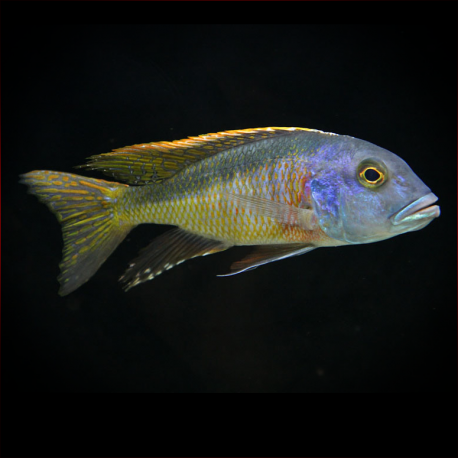More info
Datasheet
| Minimum Tank Size | 240 litres / 63.40 US gallons |
| Maximum Size | 22.5cm / 8.86inches |
| Temperature | 24°C / 75.20°F - 27°C / 80.60°F |
| Hardness | 10-25ºdH |
| pH | 7.5-8.8 |
General Description
The Stripeback Hap, scientifically known as Buccochromis Nototaenia, is a cichlid species endemic to Lake Malawi. It is a piscivorous fish that is rarely seen in the trade due to difficulties in collection. This species typically retreats rapidly into deeper waters when feeling threatened and primarily preys on smaller cichlids.
Aquarium Setup
The Stripeback Hap requires a minimum tank size of 240 litres (see table). Decor in the aquarium is not essential as it is a pelagic roamer, but providing ample swimming space is crucial, considering its swift swimming abilities. While rocky formations are not necessary, they can be included if housing other species that rely on them. Excellent filtration and maintenance practices are vital, particularly in tanks containing fish of this size.
Behaviour
This species is not highly aggressive towards larger tank mates but will target smaller fish as prey. It can coexist with most Lake Malawi species larger than 6 inches, except for Mbuna. Stripeback Haps generally tolerate conspecifics well, especially in spacious tanks.
Feeding and Diet
In its natural habitat, the Stripeback Hap feeds on fish, but it readily adapts to prepared foods in captivity. A diverse diet is recommended, including high-quality cichlid pellets as a staple, complemented by meaty options like prawns, mussels, and earthworms. Care should be taken to avoid overfeeding, as this species tends to be voracious eaters.
Reproduction & Dimorphism
Reproduction of the Stripeback Hap has possibly not been achieved in hobbyist settings. It is known to be a maternal mouthbrooder where females carry and protect the fertilized eggs in their mouths until hatching. Adult males of this species are larger and more vibrant in coloration compared to females.
Habitat and Distribution
In its natural habitat, the Stripeback Hap resides in waters near the shorelines of Lake Malawi, characterized by sandy substrates and abundant juvenile fish of other species. These cichlids prey on the juveniles by herding them into shallower waters for easier hunting opportunities.

